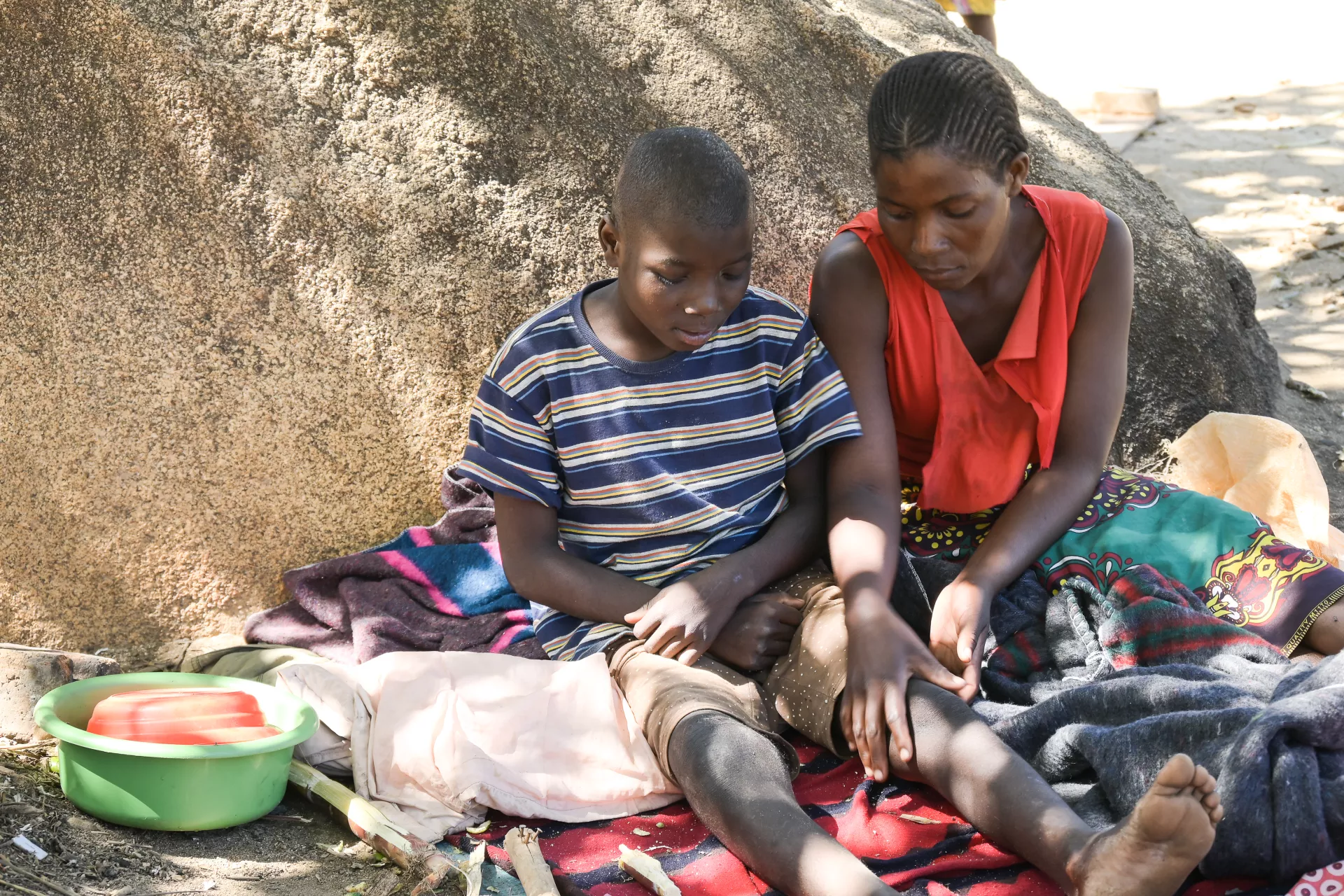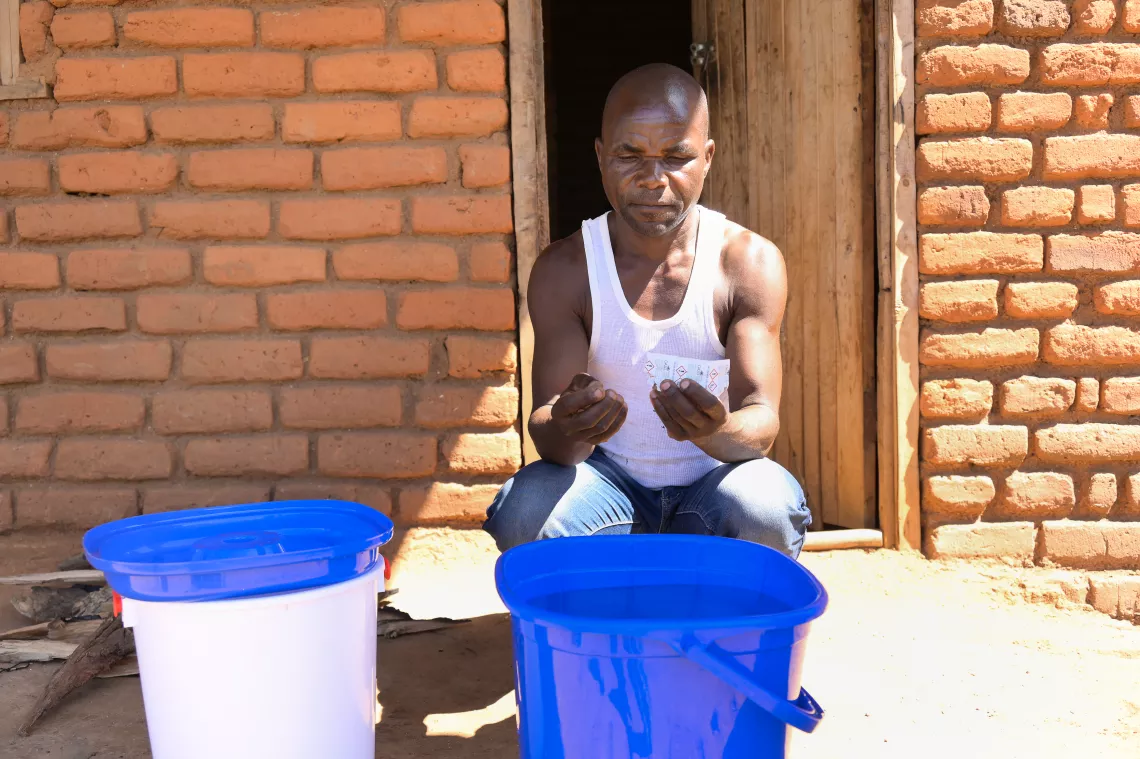Shielding cyclone survivors from waterborne diseases
Cholera prevention in disaster-hit Phalombe


Children playfully run around the expansive forecourt of the Nkhulambe EPA camp for internally displaced people from Nkhulambe Village in Phalombe. Everywhere one looks, they are confronted by poignant reminders of Cyclone Freddy: crumbling houses, scattered debris, fallen trees, and gigantic rocks imposingly situated on barren land or people with bandaged limbs.
Nearby, to the southwest, Mulanje Mountain towers over the camp. From afar, the mountain seems to bear the worst scars of the cyclone, with deep gullies running across and down its face as if an excavator had toiled through it.
While the mountain bears physical reminders of the natural disaster, the surrounding communities walk around with physical and emotional scars from its aftermath, coupled with constant threats to their lives from the elements.
The village experienced some of the worst. It lost 67 people, 60 of whom were children and seven were women.
Before the disaster, according to 2022 data, the village had 289 households, with the population of 1,564. Some people have gone home, but 38 families still remain at the camp.
Women mill around the camp, sharing stories and smiles, while others prepare large meals for the day. Behind the smiles and hearty handshakes lurk uncertainty and sadness, but they are making a significant attempt to hide them.
It is only by talking to them that one gets close to their innermost feelings of incalculable loss.
Take, for instance, Patrick Chilamba, a father of three, or Asiya Ngalande, a mother of three. Huge stones are perched where Chilamba’s house once stood. He had a close brush with death when a stone tumbling down from the mountain pinned him against the wall of his house, but as soon as it rolled away, giving him room, he dashed for dear life into the nearest mango tree where he spent the night.
His wife also escaped, but their daughter wasn't as fortunate. She was washed away and was only discovered the following day downstream near a police station.
"She couldn’t walk for four weeks, but she has now started going to school,” Chilamba says.
Ngalande, whose children are aged 12, 9, and 4, has a similar tale. Her eldest child was also injured and had to be airlifted weeks later to Queen Elizabeth Central Hospital in Blantyre for restorative surgery.
For those still remaining in the camp, or even those who have returned home, there lurks the fear of waterborne diseases such as cholera and diarrhea. After all, where water comes, waterborne infections often follow.
Before the disaster, cholera was already a public health concern countrywide, and the cyclone, with the enormous amounts of water it brought, stoked fresh fears of renewed outbreaks.
Chilamba and Ngalande share a fear of waterborne diseases. Ngalande remains at the camp, but Chilamba rented a house close to his former home, declaring that he wouldn’t want to risk his life.
“I noticed some lapses in hygiene at the camp, so I left to rent a house,” Chilamba says.

But Dickson Bawula, the health surveillance assistant for Nkhulambe Health Centre, which oversees Nkhulambe 2 village, reassures the community that waterborne diseases should not be their concern provided they are vigilant.
"I come here almost every day, and no one has shown signs of diarrhea or cholera, which is a sign of good progress. I always advise the community, specifically those in camps, to comply with advice related to hygiene and sanitation. They need to stay safe. They have to be free from all those kinds of diseases,” says Bawula.
The area's success in resisting waterborne diseases has been significantly supported by UNICEF, which, with funding from the United Nations Global Emergency Response Fund (CERF) and the European Civil Protection and Humanitarian Aid Operations, donated buckets, Water Guard, plastic sheets for temporary latrine construction, and soap to people affected by the cyclone, both in the camp and those who have returned home.
Chilamba received the items only after he had left the camp, and he says they gave him peace of mind.
For those in the camp, considerable progress has been made in ensuring that waterborne diseases are a peripheral concern for both the people and the health authorities, says Ngalande.
"We are provided with chlorine, which has gone a long way to help us. Before we occupied the camp, it was filled with smelly mud. We used protective gear to clean it and disinfected the rooms with chlorine before we occupied them,” Ngalande explains.
Rose Tambula, treasurer of the committee overseeing the camp, expresses gratitude to health authorities and organizations such as UNICEF for keeping the internally displaced persons (IDPs) safe from waterborne diseases.
"Health Surveillance Assistants have been helpful in providing us with chlorine. Some organizations constructed toilets for us while our men built temporary bathrooms. UNICEF provided us with buckets in which we store chlorinated water, which is safe for us to drink. Each household was provided with a bucket, two bars of soap, and two bottles of Water Guard,” she says.




